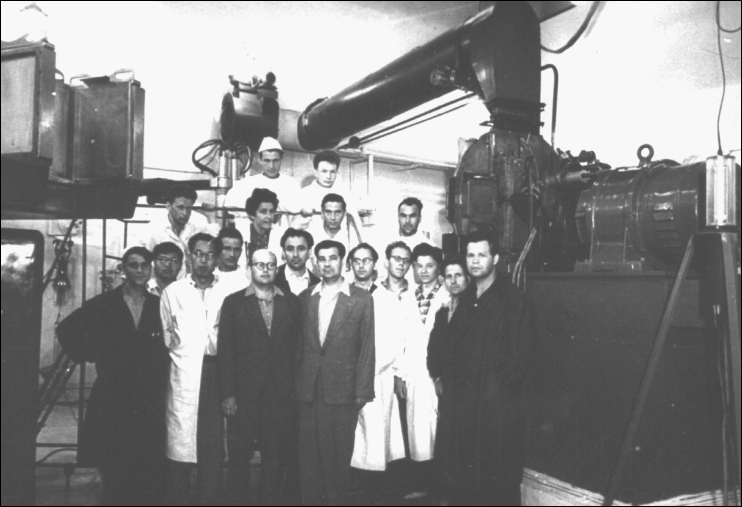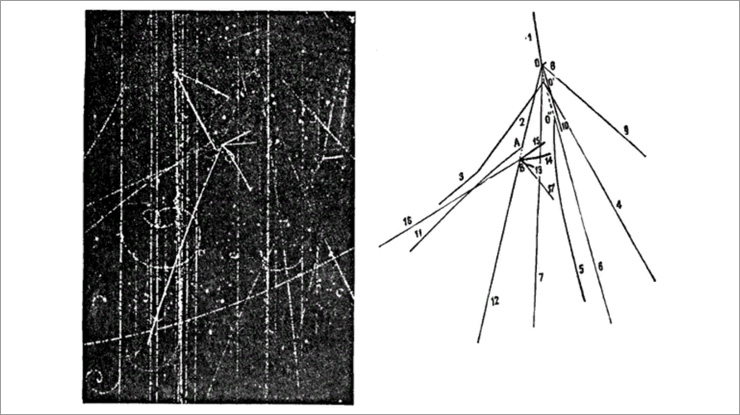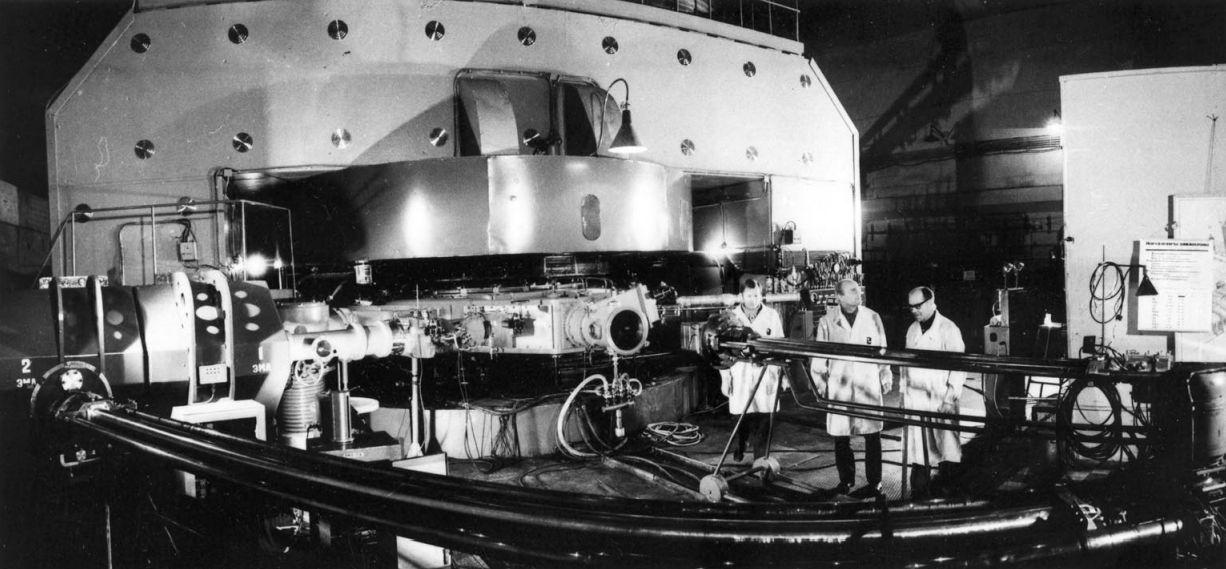The discovery of antisigma-minus-hyperon. Launch of advanced facilities
, 13 November 2015
Discovery of antisigma-minus-hyperon in LHE lab. Launch of the three-meter U-300 cyclotron at the FLNR lab, and of the IBR – at the FLNP lab.
At that time, the U‑300 cyclotron was a unique heavy ion accelerator for research in the fields of nuclear physics and chemistry, as well as for applied research. For the next 17 years, U-300 remained the most powerful cyclotron among other heavy ion accelerators operating in the world, both in beam intensity and in the diversity of accelerated ions. Heavy ions opened broad prospects for new scientific directions in nuclear physics, such as the synthesis of new transuranic elements, the study of nuclear reactions with heavy ions, and the production of exotic nuclei in which new types of radioactive decay could be observed. For the first time in the world, 104 and 105 elements of the Periodic Table were synthesized at the cyclotron, as well as a new type of radioactivity, namely proton radioactivity, was discovered.
Fast Pulsed Reactor (IBR) was created in 1960 under the direction of the author of the idea – famous Soviet physicist, corresponding member of the USSR Academy of Sciences, D. Blokhintsev.
One of the founders of quantum theory, Nobel prize winner of 1922, foreign member of the USSR Academy of Sciences since 1924, Niels Bohr expressed admiration for the courage of the creators of this miracle of reactor technology during a visit to the Institute in 1962. “A flashing atomic bomb”, in the words of Blokhintsev. After the success of Dubna, several institutes tried to implement the principle of IBR to create a reactor of a greater capacity. However, only JINR scientists have found a working solution: in 1984 a new installation, IBR-2, was launched.
 Participants of the launch of the first IBR in the hall of the reactor, June 1960
Participants of the launch of the first IBR in the hall of the reactor, June 1960

